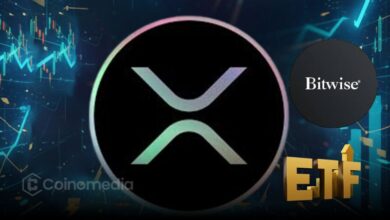Astar 2.0's DeFi Protocol Debut Shakes Up Conventional Finance: Evaluating the Increase in Liquidity and Prospects for Institutional Integration
- Astar 2.0's hybrid AMM-CEX DeFi protocol drove $1.399B TVL and $27.7B daily trading volume in Q3 2025. - Cross-chain integrations with BNB Chain, Ethereum , and Solana enabled 94% ASTER/BSC-USD volume dominance. - Strategic partnerships with Binance, YZi Labs, and global corporations like Sony validate institutional adoption potential. - Polkadot-based architecture with 6-second block time and 150,000 TPS positions Astar as hybrid infrastructure for enterprise blockchain adoption. - Institutional $3.16M
The debut of
Short-Term Liquidity Boom: Hybrid Model Fuels Growth
During the third quarter of 2025, Astar 2.0’s DeFi protocol experienced a dramatic rise in liquidity, with total value locked (TVL) climbing to $1.399 billion. This rapid growth is credited to its hybrid approach, combining automated market maker (AMM) and centralized exchange (CEX) features to maximize liquidity and minimize slippage for users.
Long-Term Institutional Growth: Alliances and Technical Progress
Although liquidity statistics reflect immediate progress, Astar 2.0’s future will depend on its capacity to attract and retain institutional players.
The platform’s technical design further enhances its attractiveness. Leveraging Polkadot’s scalable infrastructure, Astar 2.0
What This Means for Investors
Astar 2.0’s emphasis on both liquidity growth and institutional partnerships presents a strong case for investors. In the near term, its TVL and trading figures point to a developing ecosystem that can rival leading DeFi protocols. The real long-term opportunity, however, lies in its capacity to connect decentralized finance with established business systems. By embedding blockchain into supply chains and customer rewards, Astar 2.0 is evolving into a hybrid infrastructure provider—a position that could draw ongoing institutional investment.
Potential risks for investors include regulatory challenges related to cross-chain operations and rivalry from Ethereum-based platforms. Nevertheless, Astar’s unique technology and strategic partnerships help balance these risks, offering an attractive risk-reward dynamic. As the platform grows, its continued success will likely depend on sustaining innovation and expanding its reach among institutional clients.
Disclaimer: The content of this article solely reflects the author's opinion and does not represent the platform in any capacity. This article is not intended to serve as a reference for making investment decisions.
You may also like
Quarkslab Completes First Bitcoin Core Security Audit
Bitcoin Core clears its first public security audit by Quarkslab, with no major issues found—marking a big step in open-source crypto safety.Core Areas Under ReviewClean Results, Clear Direction

WhatsApp Worm in Brazil Steals Crypto Wallet Access
A WhatsApp worm is spreading in Brazil, using the Eternidade Stealer trojan to hijack crypto wallets and banking apps.Eternidade Stealer: A Silent Crypto ThiefHow to Stay Safe

ETH $2.8K Support Signals a Possible Rebound
ETH holds $2.8K support, a key on-chain level hinting at a potential short-term rebound as historical trends reappear.Why the $2.8K Realized Price MattersWhat Comes Next for Ethereum?

Bitwise Launches Spot XRP ETF With Ticker $XRP
Bitwise unveils its new spot XRP ETF under the ticker $XRP, marking a major milestone for XRP adoption in traditional markets.Why This XRP ETF MattersWhat’s Next for XRP and Bitwise?
